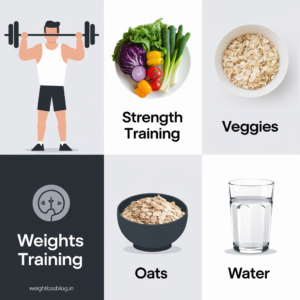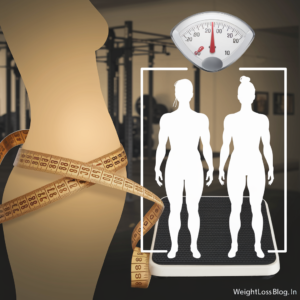The Essential Do’s and Don’ts of the Volumetrics Diet for Weight Loss
Introduction
The Volumetrics Diet is a science-based eating plan that promotes weight loss by focusing on low-calorie, high-volume foods that help you feel full and satisfied without consuming excessive calories. By emphasizing fruits, vegetables, soups, and other water-rich, fiber-filled foods, the Volumetrics Diet helps create a calorie deficit while keeping hunger at bay. To maximize your success on the  diet, it’s important to follow the right approach. This list of do’s and don’ts will guide you through the Volumetrics Diet and help you achieve your weight loss goals.
diet, it’s important to follow the right approach. This list of do’s and don’ts will guide you through the Volumetrics Diet and help you achieve your weight loss goals.
Do’s of the Volumetrics Diet
1. Do Focus on High-Volume, Low-Calorie Foods
The foundation of the Volumetrics Diet is high-volume, low-calorie foods like fruits, vegetables, and broth-based soups. These foods provide bulk to your meals, helping you feel full and satisfied without adding too many calories. By filling up on these foods, you’ll reduce your overall calorie intake while still eating enough to stay full.
Incorporate a variety of colorful fruits and vegetables into your meals to ensure you’re getting a wide range of nutrients and keeping your meals interesting.
2. Do Include Protein in Every Meal
Protein is essential for weight loss and muscle maintenance, so make sure to include a source of lean protein in every meal. Foods like chicken, turkey, fish, tofu, and beans are great options that provide the nutrients you need without adding too many calories.
Including protein in every meal will help keep you full, support muscle maintenance, and promote fat burning, making it essential for your weight loss journey.
3. Do Eat Soup or Salad Before Meals
Starting your meals with a low-calorie soup or salad is a great way to reduce overall calorie intake. These foods are high in water and fiber, which help fill you up before you move on to the main course. Eating soup or salad first can help prevent overeating and reduce the portion size of higher-calorie foods.
Choose broth-based soups and salads with plenty of vegetables to maximize the benefits of this strategy.
4. Do Focus on Fiber-Rich Foods
Fiber is an important component of the Volumetrics Diet because it promotes fullness and supports healthy digestion. Be sure to include plenty of fiber-rich foods like fruits, vegetables, whole grains, and legumes in your meals. These foods will help keep you full for longer and prevent overeating.
Incorporating a variety of fiber-rich foods into your diet will also support healthy digestion and improve overall well-being.
5. Do Stay Hydrated
Proper hydration is essential for overall health and weight loss. Drinking enough water supports digestion, helps flush out toxins, and can even reduce feelings of hunger. Aim for at least 8 glasses of water per day, and consider drinking herbal teas or adding lemon  to your water for flavor.
to your water for flavor.
Staying hydrated will also help prevent overeating, as thirst is often mistaken for hunger. Keep a water bottle with you throughout the day to ensure you’re getting enough fluids.
Don’ts of the Volumetrics Diet
1. Don’t Overeat Calorie-Dense Foods
While the Volumetrics Diet allows for larger portions of low-calorie foods, it’s important to avoid overeating calorie-dense foods like sweets, fried foods, and processed snacks. These foods are high in calories but low in volume, meaning they don’t provide the same level of satiety as low-calorie, high-volume foods.
Focus on nutrient-dense, low-calorie foods to get the most out of the Volumetrics Diet and support sustainable weight loss.
2. Don’t Skip Protein
Protein is a key nutrient for weight loss, and it’s important to include it in every meal. Skipping protein-rich foods can lead to muscle loss, fatigue, and difficulty maintaining your weight loss. Make sure to include sources of lean protein like chicken, fish, tofu, or beans in every meal to support muscle maintenance and fat burning.
Protein also helps keep you full, reducing the likelihood of overeating or snacking between meals.
3. Don’t Rely on Processed Foods
The Volumetrics Diet encourages whole, unprocessed foods like fruits, vegetables, and lean proteins. Processed foods like packaged snacks, sugary drinks, and frozen meals are often calorie-dense and lacking in essential nutrients. These foods can hinder your weight loss progress and disrupt the balance of your meals.
Focus on fresh, whole foods to maximize the health benefits of the Volumetrics Diet and support long-term weight management.
4. Don’t Forget About Portion Control
While the Volumetrics Diet allows for larger portions of low-calorie foods, it’s still important to practice portion control with higher-calorie foods like nuts, seeds, and oils. These foods are  nutrient-dense but calorie-rich, so it’s easy to overconsume them if you’re not mindful of portion sizes.
nutrient-dense but calorie-rich, so it’s easy to overconsume them if you’re not mindful of portion sizes.
Use smaller plates and practice mindful eating to help control portions and avoid overeating higher-calorie foods.
5. Don’t Neglect Meal Planning
Meal planning is essential for success on the Volumetrics Diet, especially if you’re new to the concept of energy density. Plan your meals for the week in advance, and make sure you have the ingredients you need to create balanced, Volumetrics-friendly meals. This will help you stay on track and avoid the temptation to grab non-compliant foods when you’re busy or hungry.
Preparing meals in bulk and keeping healthy snacks on hand will make it easier to stick to the diet and achieve your weight loss goals.
Conclusion
The Volumetrics Diet is a highly effective and sustainable approach to weight loss that focuses on eating larger portions of low-calorie, high-volume foods. By following these essential do’s and don’ts, you can maximize your success on the Volumetrics Diet and achieve your weight loss goals while maintaining a balanced, nutritious, and enjoyable eating plan.
Focus on whole, unprocessed foods, include protein in every meal, and stay hydrated to ensure long-term success on your weight loss journey.